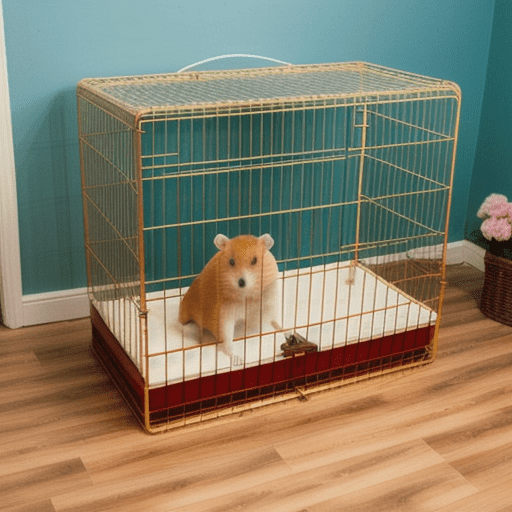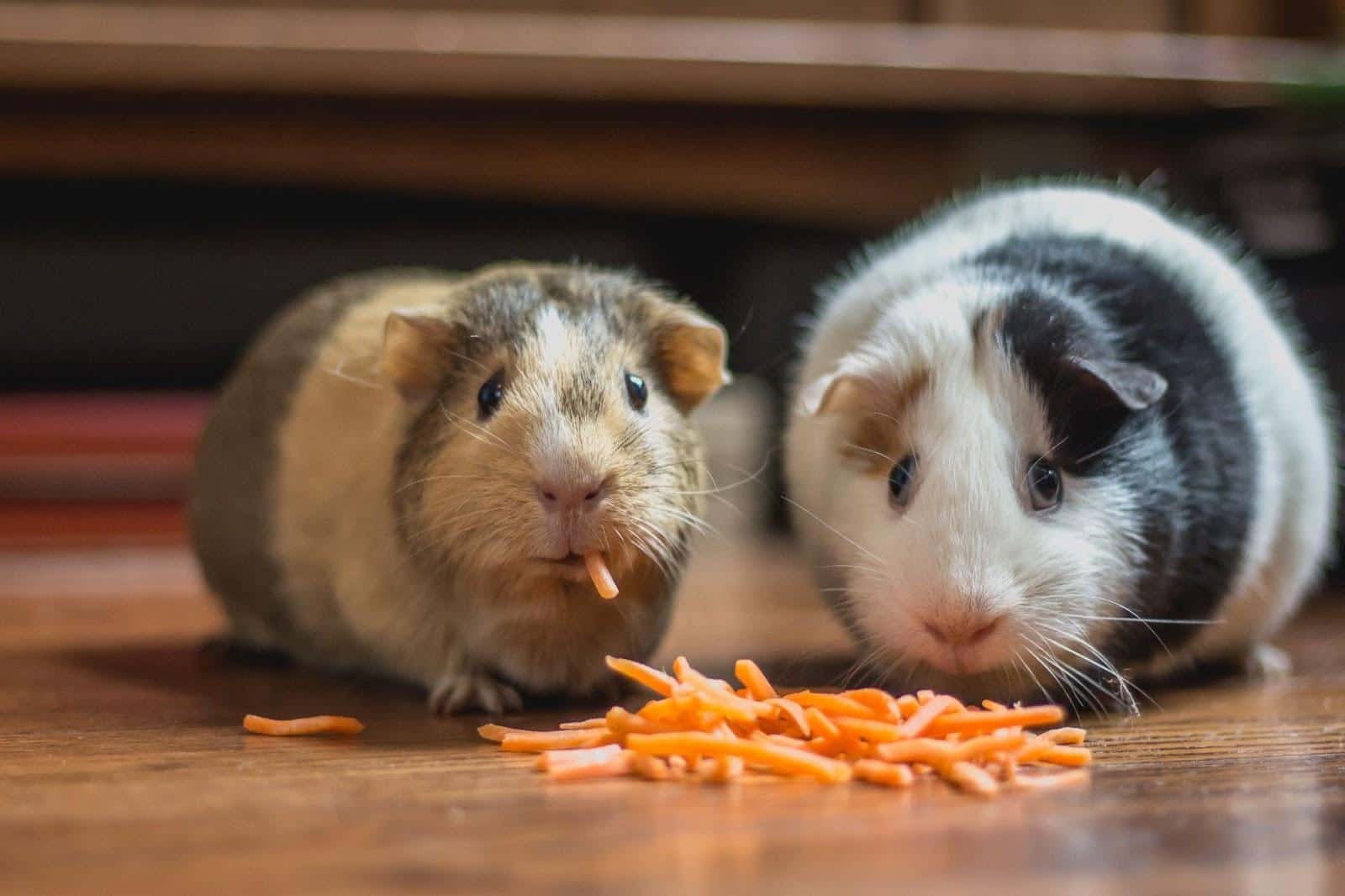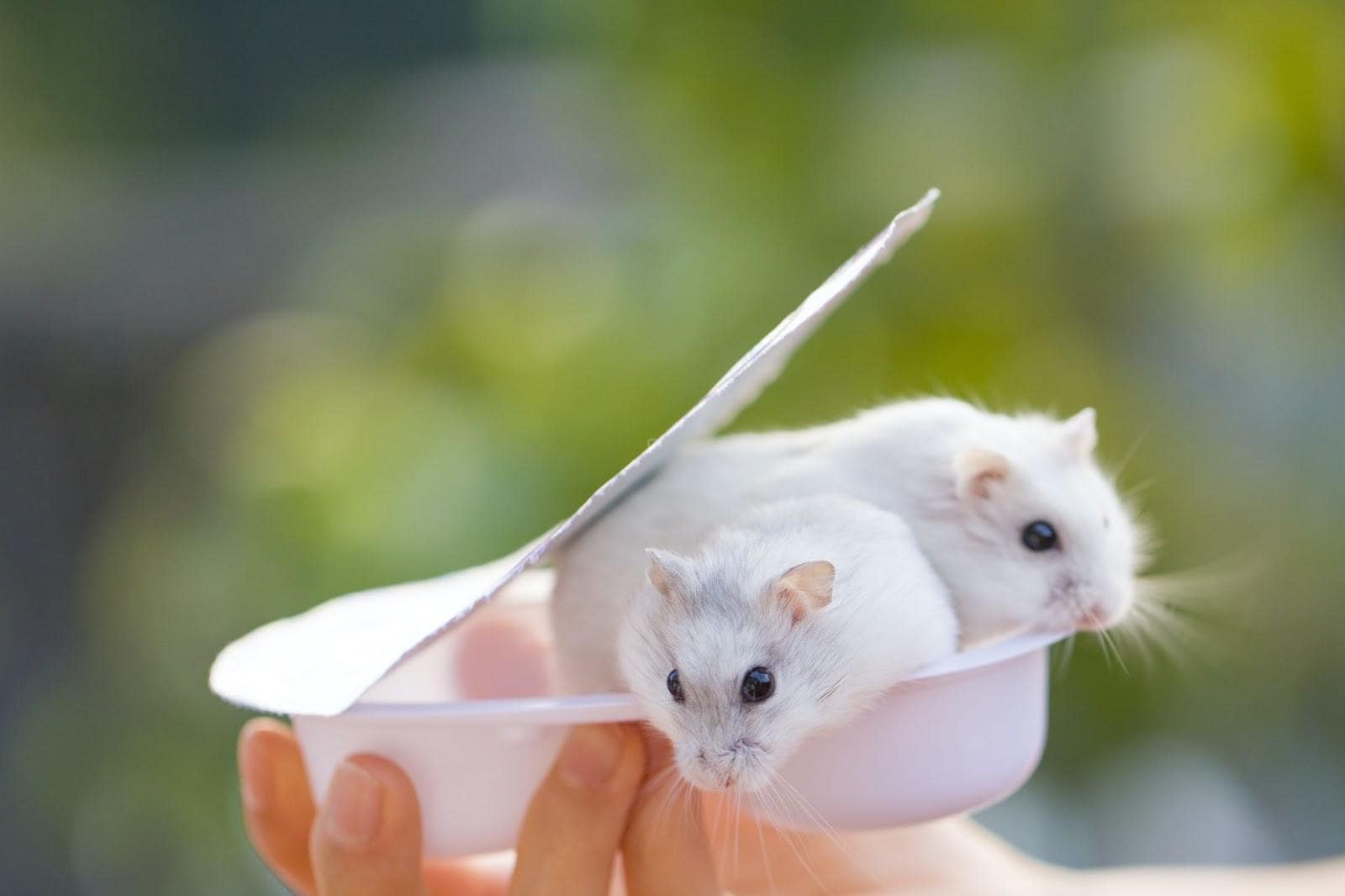If teddy bears tug at your heartstrings, prepare to meet your new best friend – the teddy bear hamster.
As a dedicated and experienced hamster owner myself, I’m here to guide you through the delightful journey of caring for a teddy bear hamster.
With its long hair and docile nature, a teddy bear hamster promises endless companionship and fun.
Yet, like any pet, owning a long haired teddy bear hamster requires a fair amount of care and attention.
This guide aims to unravel the mystery of hamster care, providing you with essential knowledge needed to ensure your furry friend lives a happy, healthy life.
Whether it’s understanding their unique behaviors, meeting their dietary needs, or setting up the perfect habitat, we’ve got you covered.
Scroll down to dive in!
Table of Contents
Teddy Bear Hamster Basics
Ever wondered what it’s like to be a teddy bear hamster? Well, a teddy bear hamster’s world is full of exploration, scurrying around, and, most importantly, munching on their favorite foods. They belong to the Syrian hamster breed, known for their long hair, which is the reason behind their ‘teddy bear’ moniker.
Understanding your furry friend is the first step towards responsible pet ownership. Hamsters are solitary animals by nature, which means they enjoy their own company. So, if you’re thinking of getting a second hamster, it’s time to pause and reassess. A lone teddy bear hamster is a happy hamster!
Understanding Teddy Bear Hamster Behavior
Each teddy bear hamster has a distinct personality, making them a joy to be around. While some are docile, others might be more active. You might see them running on their wheel during the night, as they are nocturnal creatures. It’s essential to respect their sleeping patterns to maintain their well-being.
Teddy Bear Hamster Lifespan
The lifespan of a teddy bear hamster ranges from 2 to 3 years, on average. Some can even live up to 4 years with proper care and nutrition. Longevity, however, depends on various factors, including genetics, diet, and the quality of care they receive.
Creating a Suitable Habitat for Teddy Bear Hamsters
Creating a safe and engaging environment for your teddy bear hamster is paramount. A suitable habitat not only supports your hamster’s physical needs but also caters to their instinctual behaviors, such as burrowing, climbing, and exploring.
Choosing the Right Cage

Choosing a cage for your teddy bear hamster might seem daunting, but it doesn’t have to be. The key factor is size. Your hamster needs room to explore, so opt for a cage that provides ample space. Remember, a cramped hamster is an unhappy hamster!
Bedding and Nesting Materials
Bedding and nesting materials serve as a comfort zone for your hamster, mimicking their natural burrowing behavior. Ensure to use soft, absorbent, and non-toxic bedding. It should also be changed regularly to maintain cleanliness.
Appropriate Temperature and Humidity Levels
Maintaining the right temperature and humidity levels is crucial for your hamster’s health. Hamsters thrive in temperatures between 65 to 75 degrees Fahrenheit. Humidity levels should ideally be around 40-60%. Excessive heat or cold can lead to health issues, so keep an eye on those levels.
Teddy Bear Hamster Diet and Nutrition

Food isn’t just about survival for your teddy bear hamster; it’s a source of joy too! A balanced diet keeps them healthy and happy. Understanding their nutritional needs is a must if you want to see your furry friend thrive.
Selecting Nutritious Hamster Food
A healthy hamster diet primarily consists of hamster pellets, which provide the necessary nutrients. However, supplementing their diet with various fruits, vegetables, and occasional treats is also a good idea to keep things exciting.
Supplementing with Fresh Fruits and Vegetables
While pellets should make up most of their diet, adding fresh fruits and vegetables provides the necessary vitamins and minerals. Remember to introduce these foods gradually and in small amounts to avoid digestive issues.
Providing Clean Water
Just as with humans, clean water is vital for your hamster’s health. Make sure to refill their water bottle daily and thoroughly clean every few days to prevent bacterial growth.
Enrichment and Exercise for Teddy Bear Hamsters
Exercise and play are as vital to your teddy bear hamster as a balanced diet. From chew toys to hamster wheels, there are plenty of ways to keep your hamster entertained and healthy.
Providing Chew Toys and Hideouts
Chew toys are crucial for your hamster’s dental health. Also, hideouts in the cage cater to their natural instinct to hide and burrow, making them feel safe and secure.
Hamster Wheel and Playtime Activities
A hamster wheel provides an excellent outlet for your hamster’s energy. Playtime outside the cage can also be fun but ensure that the play area is safe and free from any potential hazards.
Creating a Safe Play Area
Creating a safe play area outside the cage is a great way to bond with your hamster. Make sure it’s enclosed, free from toxic materials, and keep a watchful eye to prevent them from wandering off.
Grooming and Hygiene Practices for Teddy Bear Hamsters
Proper grooming and hygiene practices are essential to maintain your long haired teddy bear hamster’s health. While they are relatively low-maintenance pets, they still require some grooming and regular habitat cleaning.
Coat Brushing and Maintenance
For long haired teddy bear hamsters, regular brushing can help prevent their fur from matting. A soft toothbrush does the job without hurting them. However, regular grooming might not be as necessary for a black teddy bear hamster or one with short hair.
Nail Trimming
Nail trimming can be a tricky task, but it’s crucial for your hamster’s well-being. If you’re unsure about it, seek the assistance of a vet or a professional groomer.
Bathing Guidelines
Contrary to popular belief, hamsters should not be bathed in water as it can remove essential oils from them and cause stress. Spot-clean them with a damp cloth or use sand baths instead.
Health Care and Common Issues
Just like any pet, teddy bear hamsters may also face health issues during their lifetime. Understanding the signs of illness and ensuring regular vet check-ups can go a long way in keeping your long hair teddy bear hamster healthy.
Regular Veterinary Check-ups
Regular vet visits are vital to monitor your hamster’s health. These check-ups can help identify potential issues early on, ensuring your furry friend gets the required care promptly.
Signs of Illness and Emergency Care
Recognizing signs of illness can save your hamster’s life. It’s essential to monitor their behavior, appetite, and physical appearance regularly for any changes.
Loss of Appetite
A significant change in your teddy bear hamster’s eating habits, such as a loss of appetite, could be a sign of illness. If you notice such a change, it’s time for a vet visit.
Changes in Activity Level
A sudden drop in your hamster’s activity level or a lack of interest in play can be concerning. Always consult with a vet if you notice such changes.
Breathing Difficulties
If you observe your long haired teddy bear hamster struggling to breathe or making unusual sounds, it might indicate a respiratory issue and warrant immediate veterinary attention.
Abnormal Discharge
Any abnormal discharge from the eyes, nose, or any other part of your hamster’s body, could be a sign of an infection. Don’t delay a visit to the vet in such cases.
Dealing with Common Health Problems
Common health issues in teddy bear hamsters include:
- Wet tail: a diarrheal disease that requires immediate veterinary attention.
- Respiratory issues: caused by incorrect temperature or humidity levels and drafts.
- Dental problems: often due to lack of proper chew toys.
- Overgrown nails: can cause discomfort and injury if not trimmed regularly.
Breeding and Reproduction
chamsters is a huge responsibility and not something to take lightly. It requires significant time, resources, and an understanding of hamster pregnancy and pup care.
Caring for Pregnant Hamsters
A pregnant hamster needs extra care, nutrition, and a quiet, stress-free environment. Always consult a vet if you suspect your hamster is pregnant to get the right advice on their care.
Raising Baby Hamsters (Pups)
Raising hamster pups can be an exciting but challenging experience. During the first few weeks, minimal disturbance is critical to prevent the mother from becoming stressed and harming the babies.
Proper Handling Techniques
Proper handling of your hamster is essential to build trust and avoid causing them stress or injury. Here are some tips:
- Always approach your hamster slowly and gently to avoid startling them.
- Never pick them up from above, as it can make them feel threatened.
- Support their body with both hands while lifting them.
- Never hold them too tightly.
Conclusion
Owning a teddy bear hamster can be a rewarding experience filled with joy and learning. By understanding their needs and behaviors, you can give them the happy, healthy life they deserve.
Remember, owning a pet is a lifetime commitment that goes beyond providing food and shelter. It’s about love, respect, and companionship. So, are you ready to welcome a new furry friend into your life?
FAQs
How long do teddy bear hamsters typically live?
The average lifespan of a teddy bear hamster ranges from 2 to 3 years, although with exceptional care, they can live up to 4 years.
Can I house multiple teddy bear hamsters together in the same cage?
No, teddy bear hamsters, also known as Syrian hamsters, are solitary by nature and prefer to live alone.
What should I feed my teddy bear hamster?
A balanced diet for a teddy bear hamster includes hamster-specific pellets as the primary food, supplemented with fresh fruits and vegetables for added nutrition.
Alina Hartley is a small-town girl with a ginormous love of bearded dragons. It all started with Winchester, a baby bearded who was abandoned at the shelter by his former owners because of a birth defect that caused one front leg to be shorter than the other. Alina originally went to the shelter looking for a guinea pig, but one look at Winchester and it was love at first sight. From that day on, Alina has dedicated her life to learning everything she can about bearded dragons. She loves helping new beardie parents start their incredible journey with these magnificent reptiles.
Follow her on:
LINKEDIN
TWITTER.
Read her latest articles HERE
Learn more about her HERE.

